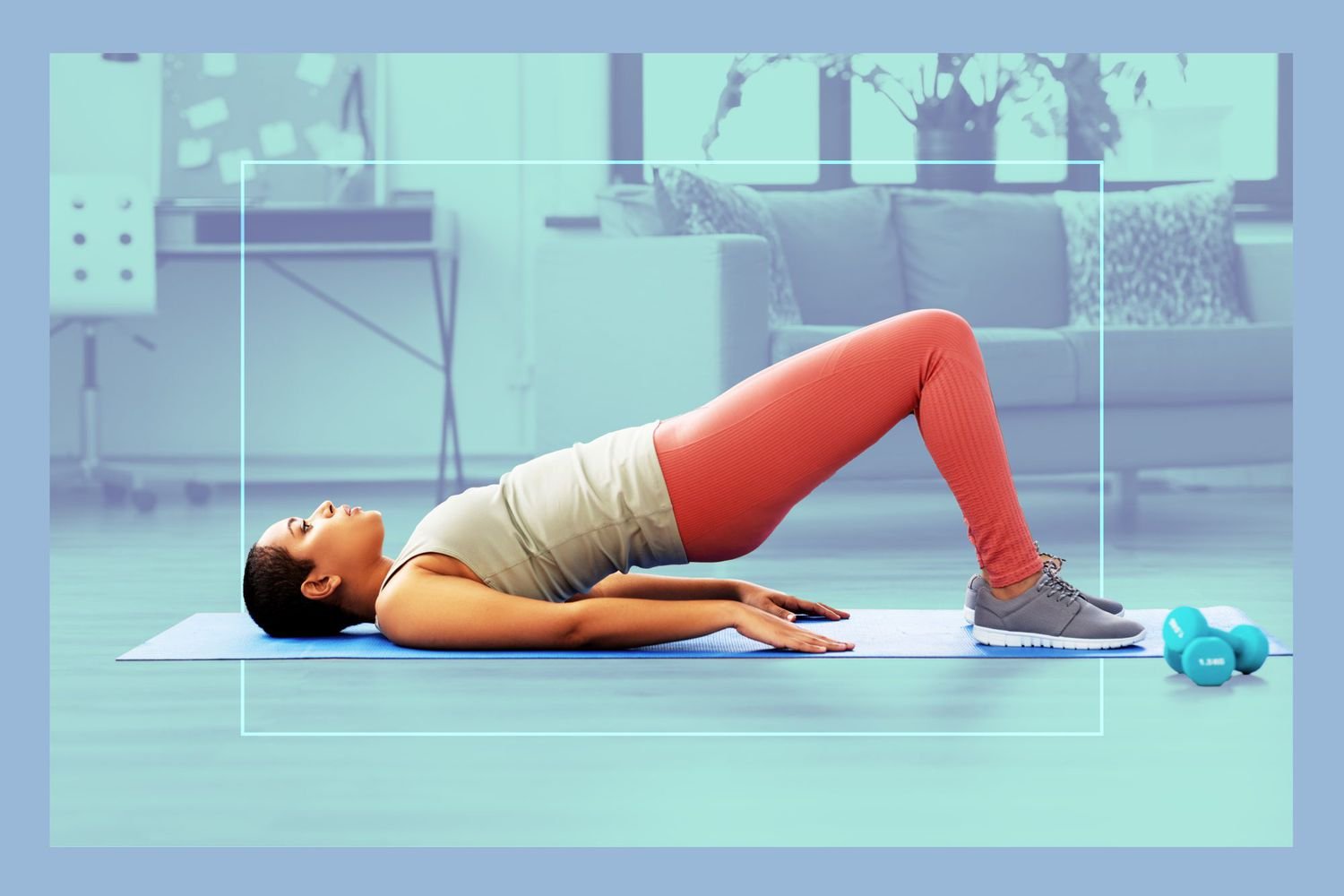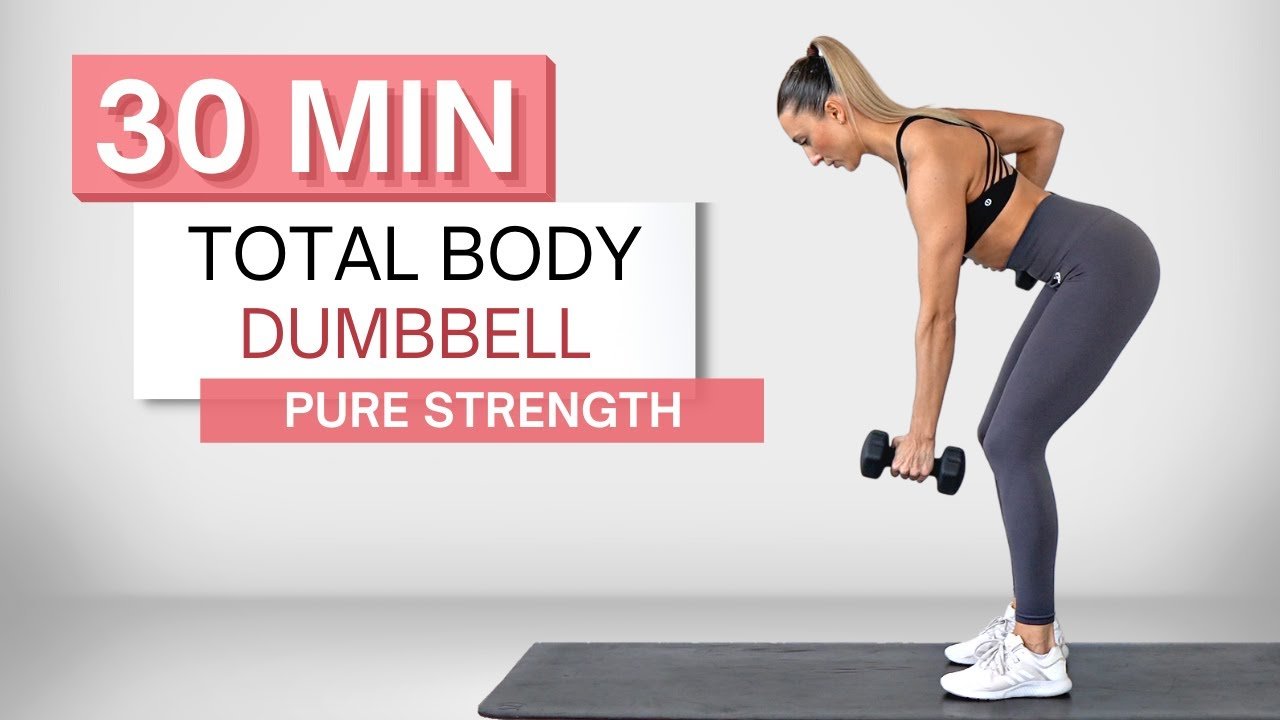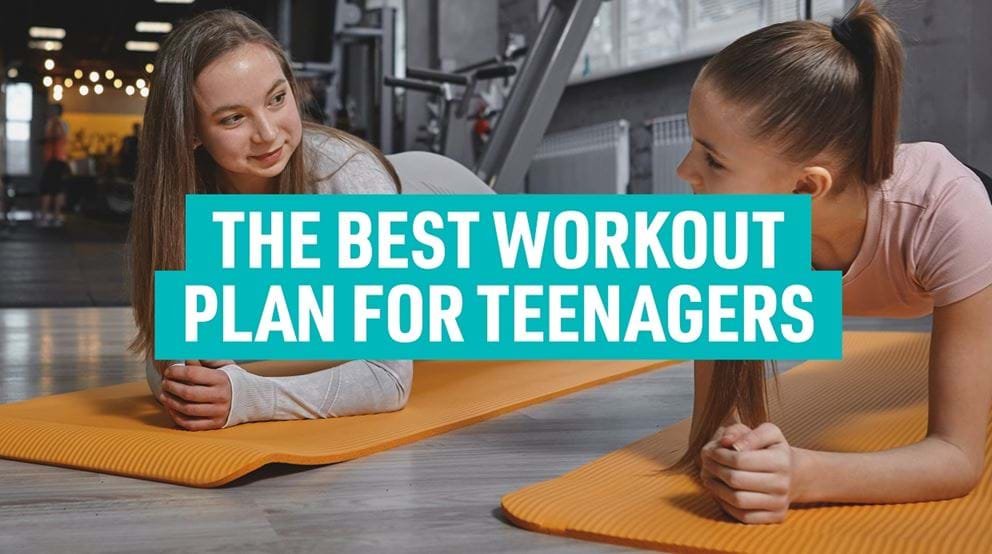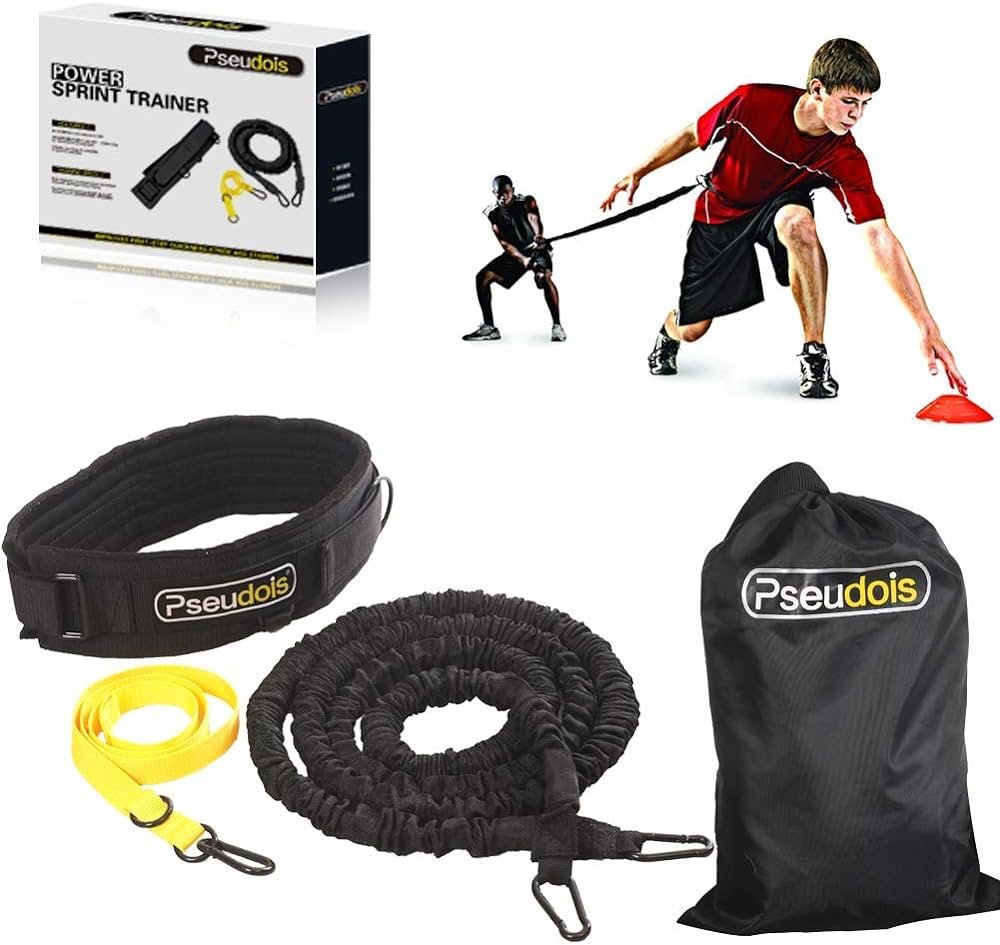A glute workout targets the muscles of the buttocks, enhancing strength and shape. Key exercises include squats, lunges, and hip thrusts.
Engaging in a glute workout not only helps in sculpting a stronger, more toned backside but also supports overall body strength and stability. Glutes, being one of the largest muscle groups, play a pivotal role in various movements, such as walking, running, and climbing.
Effective training of these muscles can improve athletic performance, reduce the risk of injury, and can even alleviate lower back pain. Regular glute exercises contribute to a balanced, well-postured physique. Considering the dynamic nature of glute workouts, they often integrate a mix of resistance training and bodyweight exercises, suitable for all fitness levels. Beginners and fitness enthusiasts alike can reap the benefits, making glute workouts a crucial component of a comprehensive fitness regimen.
Glute Anatomy And Importance
The gluteal muscles are more than just aesthetic features; they play a pivotal role in body posture and movement. These muscles span across our buttocks and work together to support the pelvis, stabilize the hips, and allow for a range of lower-body movements.
Muscles That Make Up The Gluteal Group
The gluteal group consists of three main muscles:
- Gluteus Maximus: The largest muscle, aiding in hip extension and rotation.
- Gluteus Medius: Located on the outer surface of the pelvis, important for hip stabilization.
- Gluteus Minimus: The smallest, positioned beneath the medius, assists in thigh abduction.
Role Of Strong Glutes In Overall Health
Strong glutes contribute to the well-being of our whole body. They:
| Function | Benefits |
|---|---|
| Enhance Posture | Reduces back pain, improves standing and sitting positions. |
| Improve Movement | Boosts athletic performance, enables walking and running. |
| Prevent Injuries | Stabilizes hips, shields the lower back during activity. |
A regular glute workout routine can lead to a reduction in lower back strain and an increase in sports efficiency and everyday task performance.
Setting Goals For Your Glute Workout
Kicking off your fitness journey with a targeted glute workout requires setting clear, realistic goals. Whether you aim for a peach-perfect shape or enhanced athletic performance, understanding and outlining your objectives will lead the way to success. Let’s dive into how to define these goals and track your progress.
Defining Your Aesthetic And Functional Aims
Crafting the right routine begins with knowing what you want. Do you want a firmer bum or a more powerful lower body? Answering this shapes your workout path.
- Aesthetic goals might include a rounder, lifted look.
- Functional goals focus on strength and endurance.
How To Measure Progress Effectively
To stay motivated, seeing progress is key. Tracking the right metrics ensures you’re on the right path. Think beyond the scale.
| Progress Metric | Method |
|---|---|
| Visual Changes | Photos from different angles |
| Strength Gains | Logging weight and reps |
| Endurance Improvement | Time or rep increases |
Optimizing Your Workout Environment
Start your glute workout journey strong by setting up the perfect environment. Your space matters almost as much as your routine. Let’s get it right from the start.
Choosing The Right Equipment
First things first, select equipment that boosts your glute gains. Quality matters.
- Resistance bands – essential for targeted exercises.
- Weights – dumbbells or kettlebells for added intensity.
- Ankle weights – perfect for kickbacks and leg lifts.
- Exercise mat – comfort during floor exercises is key.
- Bench or step – for elevated lunges and step-ups.
Creating Space And Atmosphere For Training
Carve out a dedicated spot for your workouts. A clean, clutter-free zone is ideal.
| Task | Tips |
|---|---|
| Space selection | Choose a well-lit, ventilated area. |
| Clutter removal | Keep the space tidy for safety and focus. |
| Atmosphere | Add motivational posters or a mirror. |
| Sound setup | Prepare an energetic playlist. |
With equipment ready and space set, you’re all set for success. Crush those glute goals!
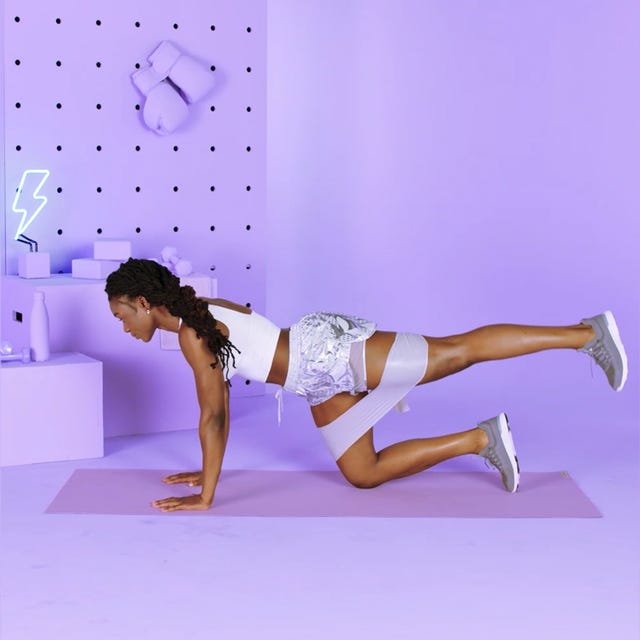
Credit: www.womenshealthmag.com
Warm-up Routines For Glute Engagement
Kicking off your glute workout right begins with the perfect warm-up. It’s the hidden secret to a more effective session. Warm-ups get the blood flowing. They wake up your muscles. Today, we focus on glute engagement. Starting with a good warm-up ensures better performance and reduces injury risk. Let’s dive into how to pump up those glutes before the main event.
Intensity And Duration Of Warm-ups
The key to an effective warm-up? Balance. Not too easy, but not too tough. Your body should feel ready, not tired. Aim for 5 to 10 minutes. Start slow. Gradually build up the heat. This primes your muscles for the workout ahead.
Specific Exercises To Activate Glutes
Now, let’s talk about the moves. Glute activation exercises are essential. They ensure your glutes are ready to work. Use these exercises to fire up your backside.
- Glute Bridges: Lie down. Bend your knees. Push through your heels. Lift your hips. You should feel your glutes burning.
- Clamshells: Lie on your side. Keep your feet together. Open and close your knees. Your glutes should be doing the work.
- Fire Hydrants: Get on all fours. Lift one leg to the side. Keep it bent. This targets your outer glutes.
- Donkey Kicks: Still on all fours? Now kick one leg back. Squeeze your glute at the top of the movement. Your core should stay stable.
Note: Rest for 30 seconds between each exercise. This keeps the intensity just right. Now, you’re set to tackle your glute workout with a solid foundation.
Fundamental Glute Exercises
Strengthening your glutes should be a big part of your fitness journey. Strong glutes are key for stability, power, and posture. The right exercises can shape, tone, and fortify these powerhouse muscles.
Squats And Variations For Maximum Impact
Squats are the cornerstone of any glute-building workout. Regular practice ensures enhanced strength and endurance. Let’s explore the most effective squat variations.
- Classic Squat: Stand with feet hip-width apart, bend at the knees, lower your body as if sitting back in a chair, then rise back up.
- Sumo Squat: Stand with feet wider than hip-width, toes pointing out. Lower into a squat, keeping knees over toes, and then stand tall.
- Jump Squat: Perform a classic squat, then explode up into a jump on the rise for a cardio boost.
Bridges And Their Benefits For Glute Development
Bridges target the entire glute region. Performing bridges regularly can lead to stronger, more lifted glutes.
- Basic Bridge: Lie on your back with knees bent and feet flat on the floor. Lift your hips high, squeeze your glutes, then lower back down.
- Single-leg Bridge: Execute a basic bridge, but extend one leg out. This variation intensifies the focus on each glute.
- Weighted Bridge: Hold a dumbbell over your hips in a basic bridge pose for added resistance and strength training.

Credit: www.amazon.com
Advanced Techniques And Movements
Take your glute workouts to the next level with advanced techniques. Challenge your muscles with new movements. See better results with targeted exercises. Step outside your comfort zone. Get ready for a powerhouse routine that sculpts and tones.
Incorporating Weights And Resistance Bands
Add weights and resistance bands to intensify your exercise. This proven method increases muscle engagement. Achieve greater strength gains and definition.
- Barbell squats: Build mass and strength.
- Weighted lunges: Improve core stability and leg power.
- Hip thrusts with bands: Enhance glute activation.
Start with lighter weights. Progress to heavier ones with time. Always focus on maintaining proper form.
Unilateral Exercises For Symmetry And Balance
Unilateral exercises correct imbalances. Achieve symmetry in your physique. Cultivate balance and coordination. These movements target each leg individually.
| Exercise | Benefits |
|---|---|
| Single-leg deadlift | Improves stability and strengthens hamstrings. |
| Bulgarian split squats | Targets quads and glutes; promotes balance. |
| Single-leg hip thrusts | Focuses on each glute for equal development. |
Ensure equal work for both legs. This prevents overuse and injury. Balanced workouts lead to a well-proportioned lower body.
Nutrition And Recovery For Glute Growth
Nutrition and Recovery for Glute Growth pair together like the perfect workout routine. Building strong, sculpted glutes isn’t just about the exercises. It’s about feeding muscles the right nutrients and allowing them time to heal and grow. This section delves into making sure your diet and rest cycle propel you towards your dream booty.
Dietary Considerations For Muscle Gain
Your diet plays a crucial role in muscle development. Key nutrients fuel glute growth and repair after a workout. Consider these essentials:
- Protein: The cornerstone of muscle repair. Include lean meats, beans, or protein shakes.
- Carbohydrates: They provide energy. Opt for whole grains and vegetables.
- Fats: Essential for hormone production. Focus on healthy fats like avocados and nuts.
| Macronutrient | Sources | Benefit |
|---|---|---|
| Protein | Chicken, Tofu | Muscle Repair |
| Carbs | Quinoa, Sweet Potatoes | Energy |
| Fats | Almonds, Olive Oil | Hormone Health |
Stay hydrated. Water helps transport nutrients to your muscles for optimal growth.
Importance Of Rest And Recovery Techniques
Rest is just as important as the workout itself. It’s when your muscles repair and grow. Aim for 7-9 hours of sleep. During sleep, your body releases growth hormones.
Recovery techniques such as stretching, foam rolling, and massage, aid muscle recovery. They improve blood flow, which helps in removing toxins from the body.
- Stretching: Enhances flexibility, reduces stiffness.
- Foam Rolling: Relieves muscle tension, increases blood flow.
- Massage: Boosts circulation, aids relaxation.
Active recovery can also be beneficial. This includes light exercise on rest days. Keep intensity low—think gentle yoga or a brisk walk.
Incorporating Flexibility And Mobility Work
Incorporating Flexibility and Mobility Work into a glute workout routine ensures muscles and joints function optimally. This addition enhances performance, reduces injury risk, and improves overall movement quality. By focusing on flexibility and mobility, workouts become more effective, leading to better strength gains and muscle development.
Stretching For Better Range Of Motion
Stretching is vital for maintaining and increasing range of motion. A flexible body can perform exercises with greater depth and control. Before you get started with weights, consider these stretches to prime your glutes:
- Pigeon Pose: Opens the hips and stretches the glutes.
- Seated Forward Bend: Stretches the lower back and hamstrings.
- Lunging Hip Flexor Stretch: Targets the hip flexors and quads.
Hold each stretch for 20-30 seconds to maximize effectiveness. Remember, the goal is to feel a gentle pull, not pain. This means you should stop if you feel any sharp or intense sensations.
Including Mobility Drills In Your Routine
Mobility drills keep joints healthy and movements fluid. They prep the body for the demands of a challenging glute workout. Here are some drills to integrate:
- Hip Circles: Loosen up the hips and prepare them for dynamic movements.
- Leg Swings: Enhance blood flow and increase leg flexibility.
- Dynamic Lunges: Improve overall lower-body mobility.
Perform each drill for about 1 minute. Concentrate on smooth, controlled motions. Quality trumps quantity, so focus on perfecting your form with each movement.
Tracking Performance And Adjusting Your Routine
Tracking performance and adjusting your routine are key for maximizing the effectiveness of your glute workouts. To witness real gains and ensure you’re on the right track, you need a reliable system for monitoring your progress. This helps you make informed decisions about when to kick things up a notch and how to tweak your routine for the best results.
Using Apps And Journals For Monitoring Workouts
With technology at our fingertips, tracking workouts has never been easier. Fitness apps allow you to log exercises, sets, reps, and weights used. They often provide graphs and stats on your performance over time. Properly utilized apps help you see just how far you’ve come. Don’t want to use an app? A simple journal works just as well. Consistently jotting down your workouts enables you to look back and evaluate your progress.
- Log daily workouts with specific details.
- Review weekly to identify strength gains.
- Use visuals like graphs to spot trends.
When And How To Scale Intensity Or Volume
Understanding when to increase the challenge is crucial. Signs it’s time to scale up might include hitting all your reps too easily, or simply not feeling the same burn. Gradually increase the weight or volume to keep your muscles challenged. If your routine includes three sets of 10 reps, try pushing to 12 reps, or add an extra set. Listen to your body and only progress as it feels right to avoid overtraining.
| Current Routine | Next Step Up |
|---|---|
| 3 sets x 10 reps | 3 sets x 12 reps or 4 sets x 10 reps |
| 20 lbs weight | 25 lbs weight |
Remember, rest and recovery are just as important as the workout itself. Let your muscles heal to see the benefits of your hard work.
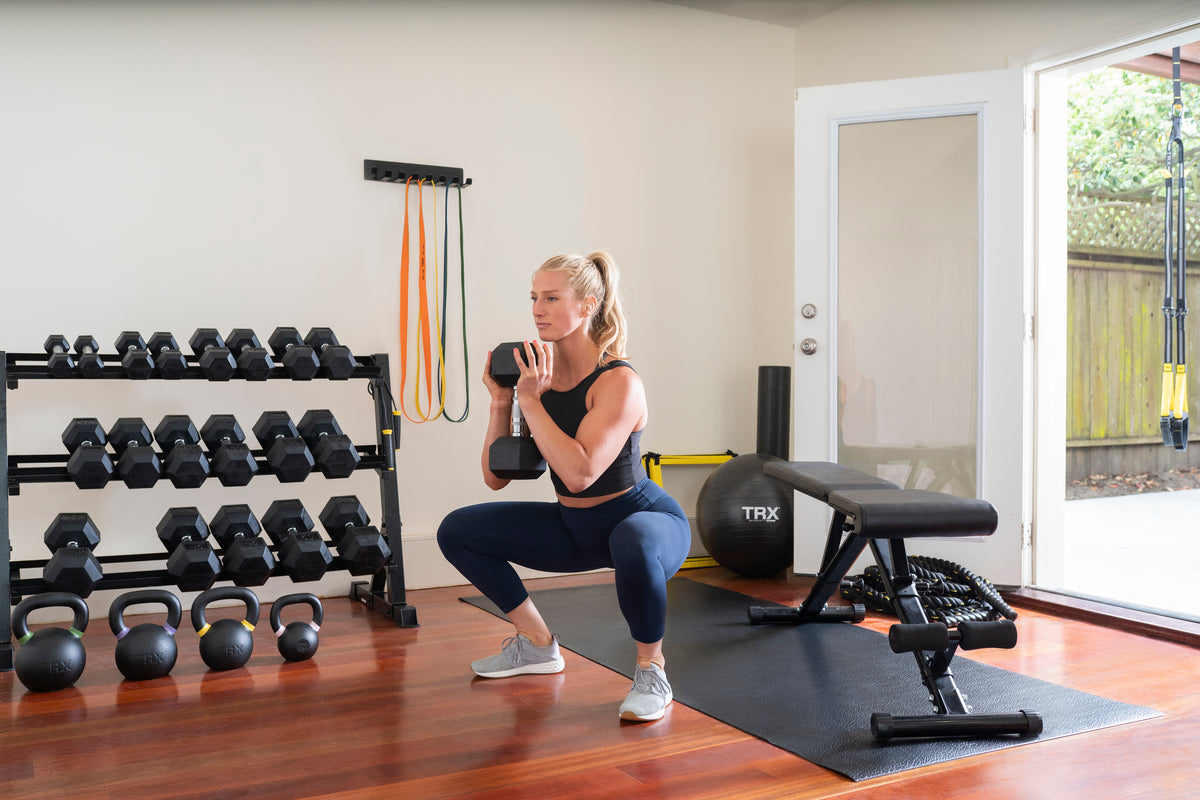
Credit: www.trxtraining.com
Common Mistakes And How To Avoid Them
Glute workouts are the cornerstone of a great lower body regime. A well-rounded booty can be a fitness goal for many. Yet, enthusiasts often fall prey to common mistakes that can hinder progress. Understanding these errors and mastering the ways to avoid them is crucial for effective results and maintaining a healthy training routine. Stay aware, practice caution, and watch your form to ensure your glute workouts lead to success, not setbacks.
Avoiding Overtraining And Injury
Excessive training can lead to more harm than good. There’s a thin line between pushing limits and pushing into injury territory. Rest is vital as it allows muscles to recover and grow. Aiming for two to three glute-specific workouts per week should suffice. Listen to your body; pain beyond the usual muscle soreness signals a need for a break. Using a calendar could help to track workout days and rest periods effectively.
Ensuring Proper Form And Technique
Getting your technique right is non-negotiable. Incorrect form not only yields poor results but can also cause avoidable injuries. A mirror is a great accessory to check alignment during exercises. Start with lighter weights to master the motion. Gradual progression is key. DVR a few workout sessions. Review the footage to spot form discrepancies. Seek guidance from qualified trainers who can provide live feedback and modifications.
| Common Mistake | Consequence | How to Avoid |
|---|---|---|
| Skipping warm-ups | Possible strain or injury | Always start with a dynamic warm-up |
| Ignoring rest days | Reduced muscle recovery | Schedule rest days into your weekly plan |
| Rushing through reps | Lesser activation of target muscles | Focus on slow, controlled movements |
- Use lighter weights to perfect form before adding more weight.
- Contract your muscles at the peak of each exercise.
- Keep movements slow and controlled to increase muscle engagement.
Frequently Asked Questions For Glute Workout
What Is The Most Effective Glute Workout?
The most effective glute workout typically includes exercises like squats, lunges, deadlifts, hip thrusts, and glute bridges. These target the glute muscles through varied movements and resistance levels.
What Is The Best Exercise For The Buttocks?
The best exercise for toning and strengthening the buttocks is the squat. Variants like barbell squats and sumo squats target the glute muscles effectively.
What Are The 4 Types Of Glute Exercises?
The four types of glute exercises are squats, lunges, deadlifts, and hip thrusts. These target the gluteal muscles for strength and toning.
How Can I Build My Glutes Fast?
To build your glutes quickly, engage in strength training exercises like squats, lunges, and deadlifts. Focus on progressive overload and ensure proper form. Incorporate sufficient protein intake for muscle repair and aim for consistency in your workout routine.
Conclusion
Wrapping up, a dedicated glute workout is key to building strength and improving aesthetics. Keep consistent, focus on form, and challenge yourself progressively. Discover the power a strong lower body holds for overall well-being. Your fitness journey is unique, so tailor your routine and celebrate your gains!
